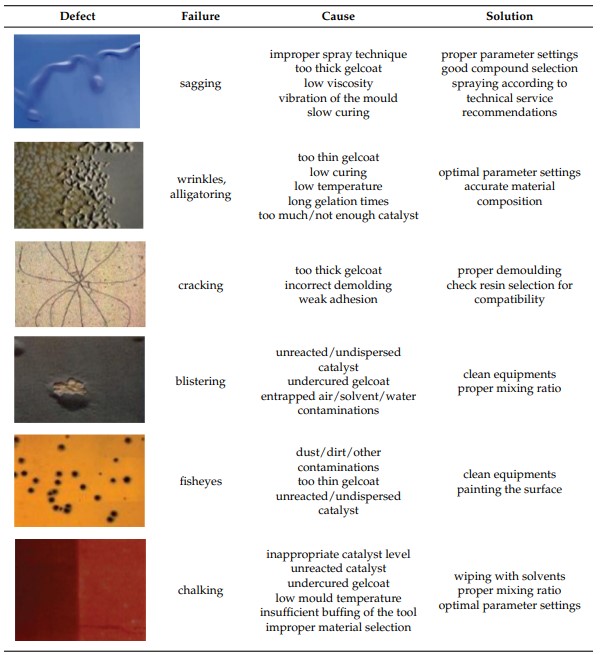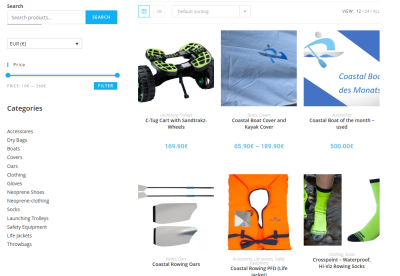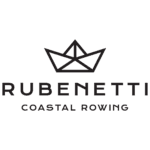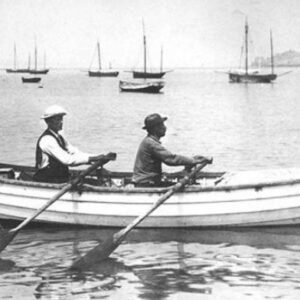Most of our rowing boats are covered with a gelcoat. We’ve all heard that before. But do you know, what exactly a gelcoat is? It is a paint, a varnish, and a protective layer. Imagine the stress your boats are facing: Salt water, UV rays; it should be shiny, and at the same time, we do not like scratches. Imagine: Your boat is lying on the beach, being dragged across the sand, it’s 35° C outside, and then you bring the boat into 15°C cold water. All of that is stress on your boat. And this is where the gelcoat comes into the picture:
What exactly is a gelcoat
A gelcoat is a liquid resin that creates a smooth, shiny surface on boats and other composite products. A Gelcoat is a type of polymer used as a protective coating on boats and other watercraft. It is typically applied to the hull of the vessel, and it acts as a barrier against UV rays, salt water, and other elements. Gelcoat is available in various colors and can be polished to a high shine. It is also one of the most durable materials used in boat construction, making it an ideal choice for those who want their vessel to look good for years to come.
Scientific literature often makes a comparison to car paint. The gelcoat is a protective layer, top coat, and even a specific sealing coat on the composite component. It is based on polyester resins or epoxy resins. This resin protects your boat for many years from UV rays, prevents corrosion, and makes your boat nice and colorful. These coatings are always 2-component mixtures, so they are mixed with a hardener.
The coating is slightly transparent. It is used to show, for example the carbon design of your boat. By adding color pastes into the coating, you will define the final color of your boat. Since the gelcoat layer is applied to negative molds without reinforcing fabric, a clean and smooth component surface is created. This can be seen very well on coastal boats or motor homes.
Negative and positive molds
When the boats leave the factory, they are usually covered with a gelcoat. Manufacturers use “negative molds” to make the deck and hull. (Hand laminates / Vacuum process)
In this case, the gelcoat is applied as the first layer on the mold. For large boats, the gelcoat is sprayed (see picture), and for coastal boats, the gelcoat is sometimes painted (term: brush).
What does this mean in terms of boat repair? For boat repairs, you will use a topcoat. A topcoat is used when working on the positive form, for example, when repairing a boat. A topcoat is a polyester or epoxy resin-based coat with an air-drying agent. If you repair your boat in the boatshed and brush it with a topcoat, you will achieve the same result. The topcoat cures tack-free in the air.
What exactly is a gelcoat – the difference between gelcoat and paint?
A gelcoat is usually much thicker than paint and is engineered to protect the underlying fiberglass and provide a smooth, shiny appearance. Paint is thinner and typically much easier to apply. Unlike paint, gelcoat will not adhere to existing paint, wood, metal, or concrete. A Gelcoat also has a limited shelf life of around 3-4 months at about 23°C ( 70°F ), whereas solvent-based paints can last up to 15 years, while latex and water-based ones may last for up to 10 years.
What happens if the gelcoat is not applied properly? Cracks…
This table shows some of the most common mistakes:

Typical mistakes during processing can be seen in this table. Hopefully, you will never see those problems on your boat. At least not on your new boat. It depends on how you treat your boat. The gelcoat usually protects your boat for years. Scratches from stones or permanent wear and tear at the beach will lead to a thinner coating layer and eventually cracking. Storing your boat outside for an extended period will decrease UV protection. Not immediately, but over the years, the color will fade out.
Final thoughts
Most rowing boats are produced with a gelcoat. This gelcoat has excellent functions to protect your boat and make it pretty. Will you discover defects on your boat, you need to investigate what has caused the problems. Be sure it is a gelcoat and not paint. One method is to use rubbing alcohol on a white cloth and rub it over an inconspicuous area of the hull. If the surface starts to shine, you will likely have a gelcoat. Not all issues are due to wrong boat handling. Some defects can be delivered already with the new boat.







